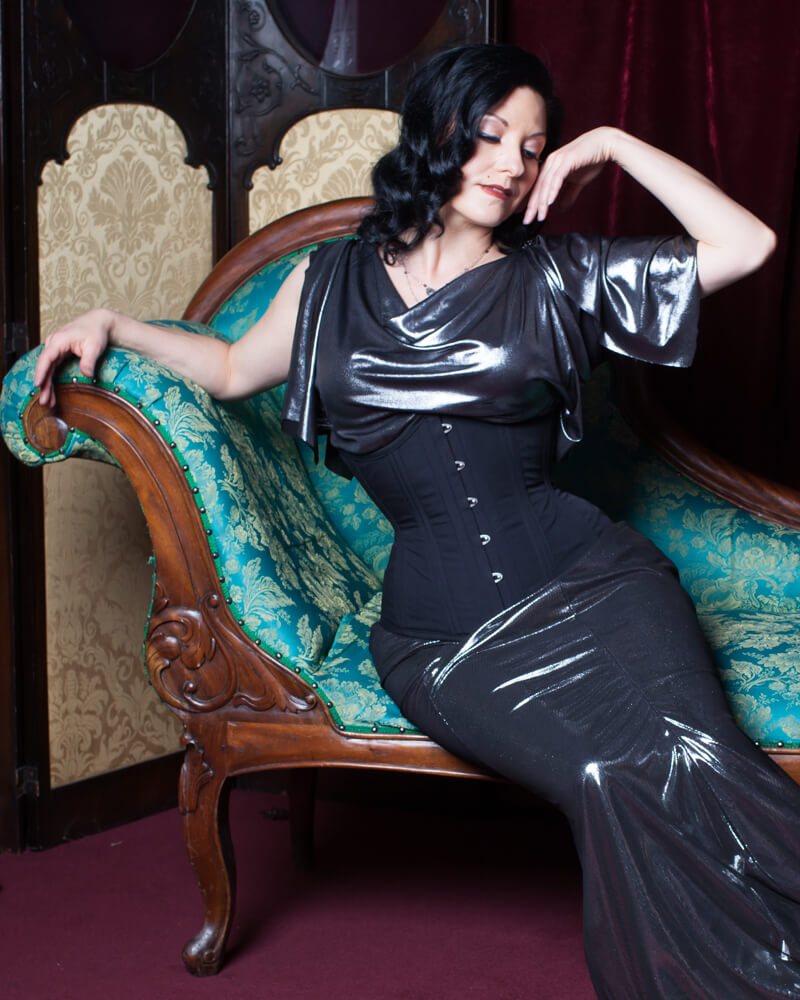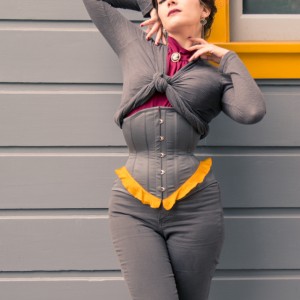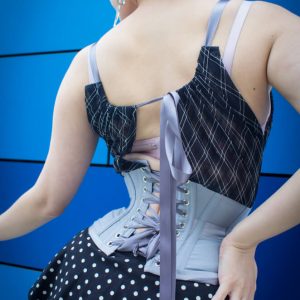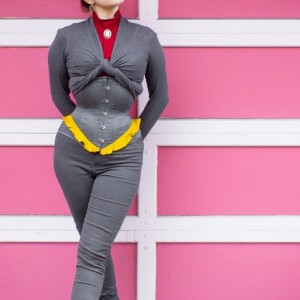How to Shop for a Waist Training Corset
As a corsetmaker, I am thrilled by the wave of prospective waist trainers with whom I've been coming into contact. In a marketplace crowded with such a wide array of product offerings, it can be confusing to know which to buy in order to begin waist training. Many of these garments aren't even functional for occasional wear --- the words "suitable for waist training" on a product page are not enough to go off of. If you are looking to start waist training, I recommend looking for the following qualities.
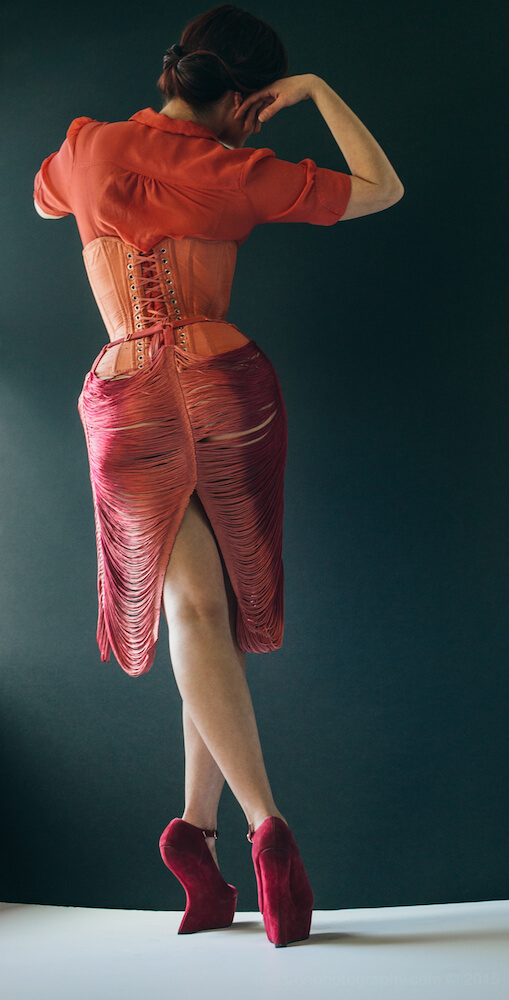
Custom waist training corset "Sherbert Doll" by Pop Antique | Model: Victoria Dagger | Photo © Joel Aron
Stretch or Lace Up? Factory or Handmade?
This is a problematic issue I've addressed in previous posts, from Being Squeezed: Stretch Shapewear vs Corsetry to What Is a "Real" Corset Anyway? If you're a regular reader, I hope you'll forgive me for repeating myself. The short version is that stretch shapewear actually creates more pressure with less controlled results as compared to well-fitted laced-back corsets. I highly recommend the use of corsets over Spanx/fajas/girdles for both superior comfort and silhouette.
Hopefully I've convinced you about corsets! The next step is to get you into a good corset. Cheap factory-made corsets are the worst of both worlds: tube-shaped with all-over pressure like a faja, but with the added disadvantage of cheap boning which easily warps and pokes you uncomfortably. Handmade corsets have superior construction and fit, both of which make them more comfortable and effective. Their level of customer service is generally higher and more consistent. You have far more control over the design and details, and a fit personalization is usually possible even without paying for a custom made corset.
There are also a (very) few brands of factory-made corsets that are popular as "starter" corsets because they are better made and shapelier than many other brands at the same price point. You can read my write-up of these starter brands under $100 and fellow columnist Karolina Laskowska's review of the same brands here on The Lingerie Addict. Since these brands are much cheaper than handmade corsets, they're a good place to start if you're not sure about wearing corsets yet, but they won't hold up as well. They will, however, probably arrive much faster than a corset that is made to order.
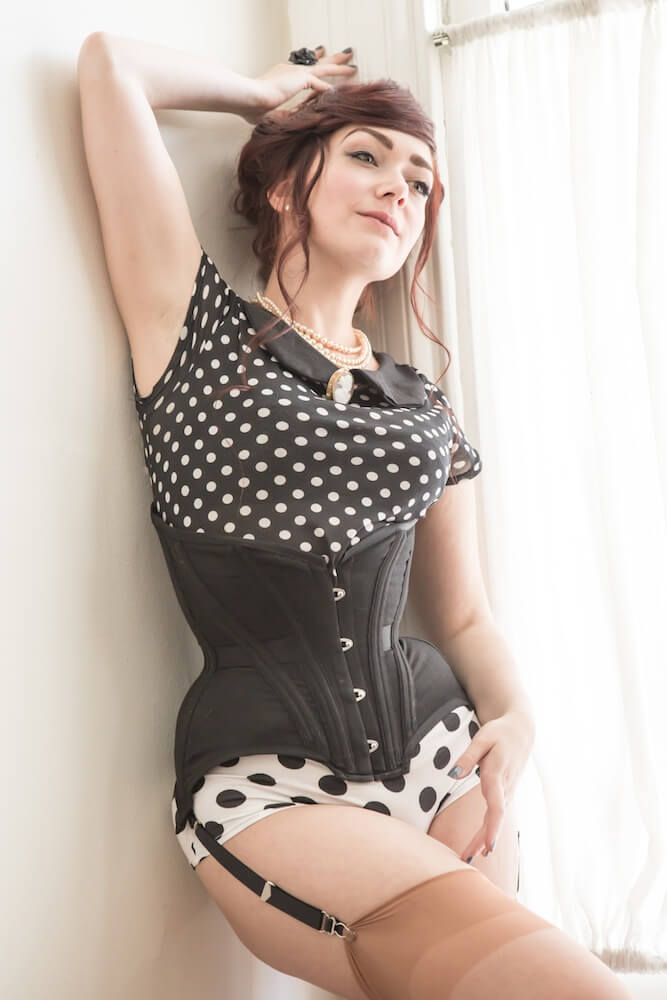
Pop Antique "Gibson Girl" waist training corset | This single layer corset has all its construction details on the outside, to create the smoothest interior possible. Single layer construction reduces breaking in time and improves mobility. | Model: Victoria Dagger | Photo © John Carey
Construction Qualities
So what specific qualities should you be looking for in your hopefully handmade waist training corset? There are a lot of cheap brands that will say a corset is "suitable for waist training" simply because it has steel bones. Steel bones help support the designed shape, they cannot create it. Since fit is harder to identify --- especially when web shopping --- I'm going to start with the easily quantified construction qualities that are ideal for waist training.
To keep the task of putting on (and taking off) your corset from being a chore, you will definitely want a corset with a front closure, usually a steel busk. (You'll still need to unlace before taking it off, though.) If you're worried about the bumps from the busk showing through your clothes, look into heavy-duty zips or ask about a busk cover. Your corset should be made from a sturdy and smooth material --- a corset that is heavily textured is more prone to snagging and wear. Choose a neutral color, such as black, beige, tan, brown, or grey, which will make for easier corset styling. The waist should be reinforced with a waist tape, which helps stabilize the area under the most pressure and minimize stretching.
I find a corset with a smooth interior construction to be much better for daily wear as it reduces chafing and pressure. The corsets I make for my line Pop Antique have the smoothest interior possible for this reason. A waist tape, grommet reinforcement, and bone casings that are stitched onto the interior of the corset will all create ridges that press into the skin.
The flip side to this is that moving all those details to the outside of the corset will still create ridges, which now may show through your clothes instead. If you intend to "stealth" your corset under your clothes with fitted and/or clingy garments, you'll want a smooth corset exterior as well or instead, with no external bone casings.
Why deal with external bone casings at all then? Well, the nice thing about external casings is that they add further reinforcement, and if a bone does ever pop through, they are easy to replace. If you live a rigorous life style, I recommend reinforcing the bone channel, such as with external bone casings or flossing.
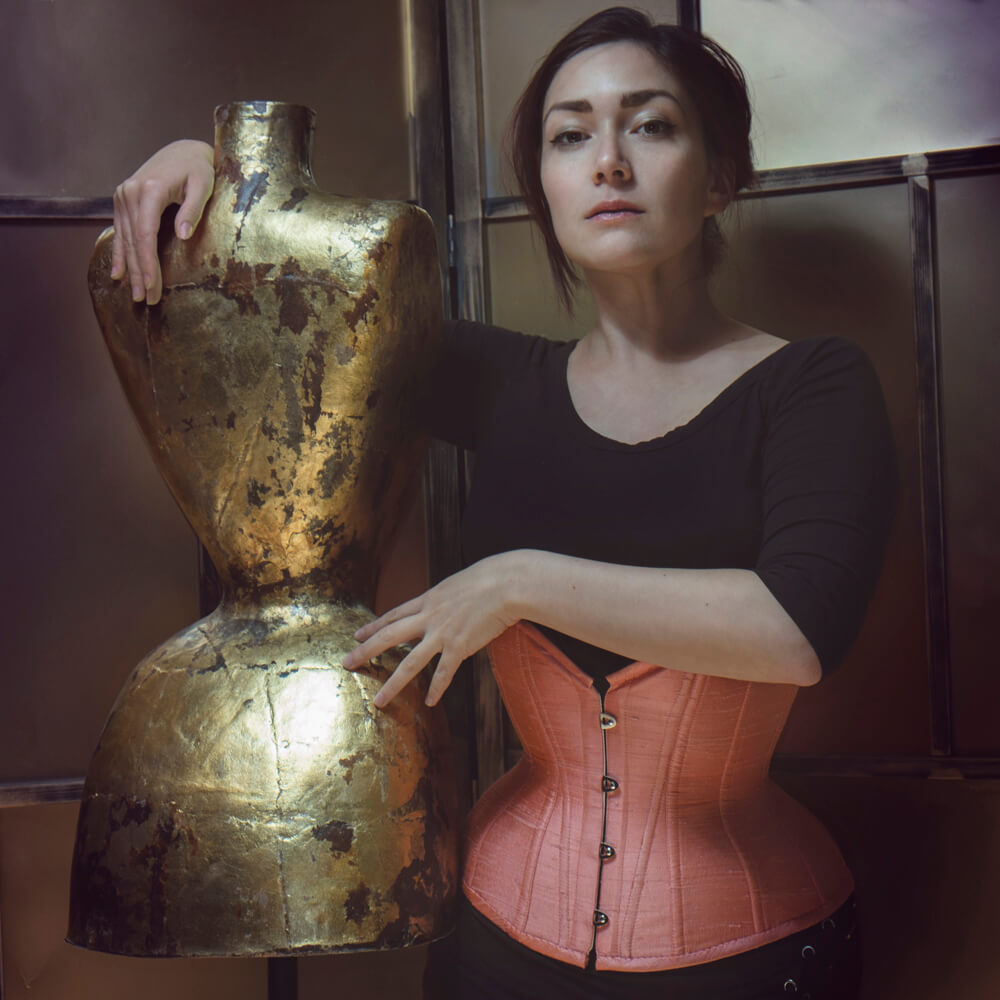
Pop Antique "Sherbert Doll" custom underbust corset with smooth interior and exterior construction | Model: Victoria Dagger | Photo © Sparklewren
Silhouette & Fit
All of the above isn't worth a damn if your corset doesn't fit you, though. In general, a standard underbust that fits from bra band to lap is a good style to start with, as it will train the soft tissues of the waist and the lower ribs both. You'll want it to fit flush at your underbust and hips, neither cutting in nor standing away, with a lacing gap of 2-4" and comfortable compression at the waist. If you're looking at garment measurements online, this generally means that the underbust and hips should be no more than 2" smaller than your own, and the waist 4-6" smaller. (Some people are more naturally compressible than others.) As your waist shrinks, you'll still wear your corset with a lacing gap, but you'll need corsets with ever-smaller waist measurements to match your changing proportion. Your underbust and hips won't shrink along with your waist unless you are also losing weight overall.
The silhouette of your waist training corset must match your natural frame and posture. If you didn't click through earlier, I really recommend reading What You Didn't Know to Look for in a Corset. The shape of the side seam on a corset, as well as how it's photographed, will tell you a lot about a corset that you can't try on. If the corset doesn't have a defined waistline, then it can't create one on your body.
Your corset will also need to match your specific goals. If shape as well as reduction is important for you, you'll have to take that into consideration with your corset shopping. It may take you several corsets before you reach a goal of either measurement or silhouette. For example, if you are desirous of a conical rib shape, you will probably have to start with a fairly mild reduction to accustom your body to this shape.
Ready to Wear or Custom?
A popular piece of advice is that waist trainers and tightlacers absolutely must buy only custom corsets. I beg to differ. The important thing is that your corset fits well and has a construction that works for you. If standard fit works on your body, I actually recommend it above a custom corset for beginning to waist train. This is when you will see the most change, and it can be really frustrating to spend $600 or even $1000 on a custom corset that stops fitting in a matter of months. Plus, since any corset that is truly custom fit will have mockup fittings, they take even longer to make than a standard size made to order.
Each maker will have their own version of "standard fit," so you can't judge all brands by any singular corsetmaker. Handmade corsets are easily personalized if you just need a small tweak --- a shorter waist to underbust measurement, or a wider hip spring, for example. After your first corset you may need an increased degree of personalization --- but how to graduate corsets is a post for another day.
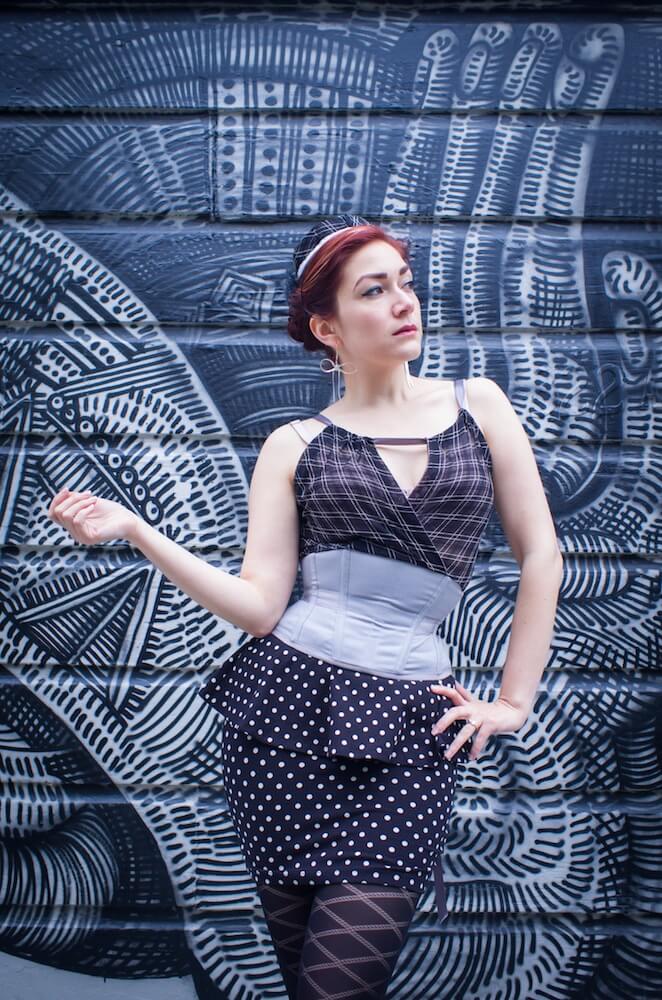
Pop Antique Integrated Corset "Bombshell" with attached mesh top | Model: Victoria Dagger | Photo © Alyxander Ryan
What have you been wondering about buying corsets for waist training?





